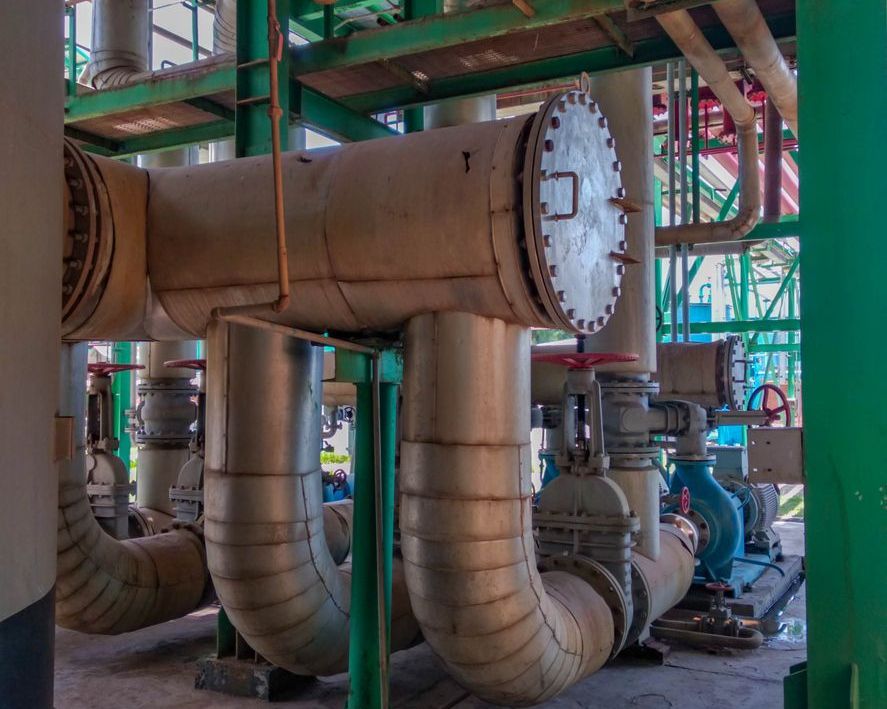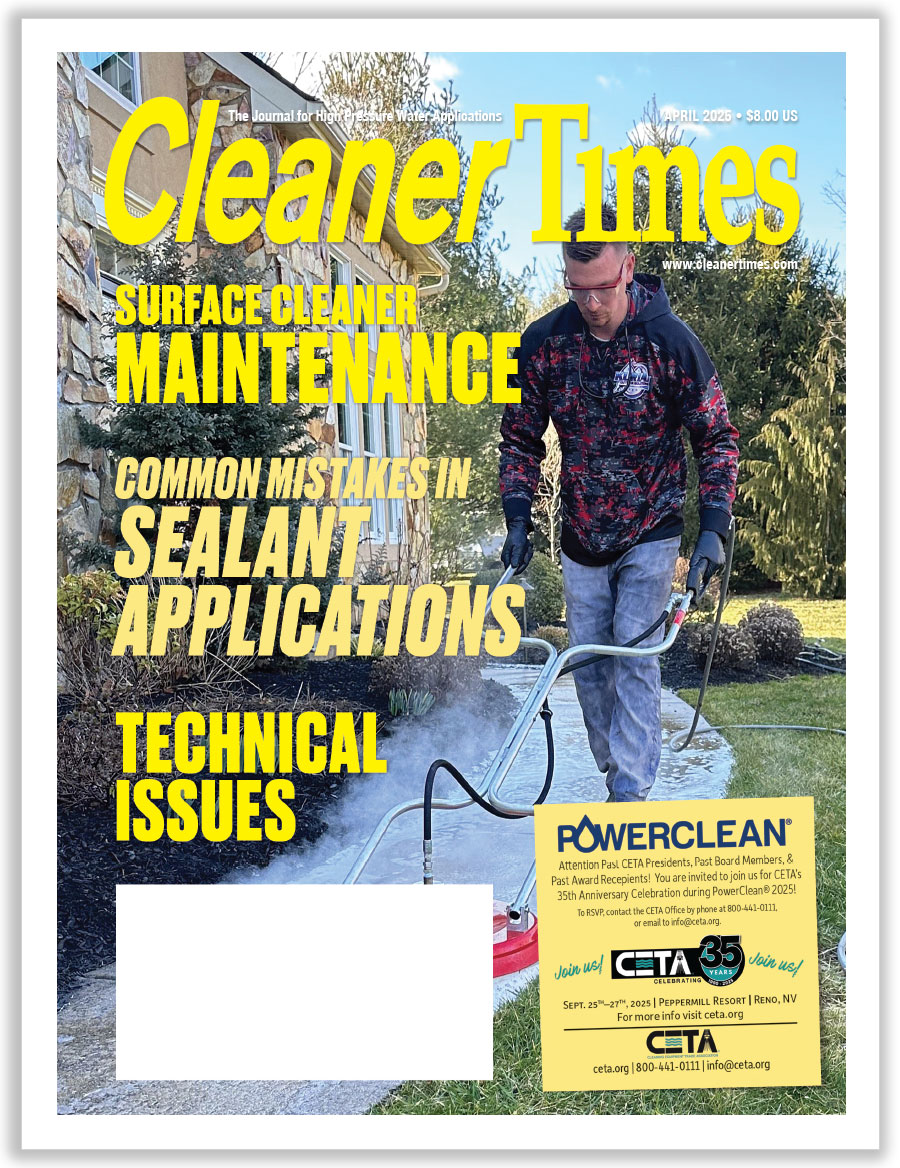
High Performance Pumps–Match Them to the Task
By Diane M. Calabrese | Published January 2025

Is it only in the eye of the beholder? No, it’s more than that.
The experience of a user generally earns a pump the “high-performance” descriptor. Yet to some extent, top criteria for assessing performance differ with settings in which pumps are deployed.
Factors by which pumps are appraised include everything from power and efficiency to reliability and durability. Most pumps are evaluated on a constellation of criteria, which cluster around getting the job done well and as fast as possible.
Is it possible to arrive at a universal definition of a high-performance pump? Probably not. But defining a high-performance pump in a specific setting is doable.
Add the caveat that some in the pump industry do not see the need for an over-arching descriptor like high-performance because the specifics of performance make it clear the pump is top notch. It’s analogous to high-performance car engines: we recognize them without the label.
Moreover, even if we haven’t taken apart an Aston Martin engine, we know there’s precision engineering involved. It’s the same with the top-of-line, high-performance pumps.
Let’s move on and learn how members of our industry define high-performance pumps. In fact, let’s start with a definition.
A high-performance pump is “one that delivers reliable, efficient, and consistent results under demanding conditions,” says Karl Loeffelholz, distributor division manager at Mi-T-M Corporation in Peosta, IA. “It is designed to handle high pressure with minimal wear.”
Such pumps fill an important niche in our industry, says Loeffelholz. “High-performance pumps are crucial for industrial and large-scale cleaning, like cleaning construction equipment and infrastructure maintenance.”
The pumps serve admirably in such contexts because “high pressure is needed to effectively remove stubborn dirt, grime, and debris,” explains Loeffelholz. But that’s just one facet of their utility.
“In the oil and gas industry, high-performance pumps must perform in rigorous conditions,” says Loeffelholz. “Being built with durable materials and advanced engineering, these pumps improve the longevity of equipment and reduce maintenance.”
There are settings where high-performance pumps greatly enhance results. “Industries where sanitation and cleaning are paramount, like food processing, attain optimal outcomes thanks to such pumps,” says Loeffelholz. “Food processing requires pumps that can handle high-pressure washing for sterilization and cleaning to enhance health and safety and meet standards and regulations.”
Of course, just as no one would put an Aston Martin V12 in a Hyundai, the pump must always be matched to the task. Precision-engineered products require fine tuning and routine attention to attain maximum longevity.
Again, it’s a constellation of criteria that defines high performance for a user. And in some settings, longevity may be greater in pumps with a bit less sensitivity than those that have been exactingly engineered.
In many ways a high-performance pump is an optimally performing pump that matches its task. Modest performance (e.g., the Hyundai engine) is sometimes all that a task demands if it’s reliable.
Varied and Vital
The “varied and vital” heading fits most engineered mechanical devices that support the industrial and space ages. So it is with pumps.
“The definition of a high-performance pump can vary,” says Derek Majewski, CFPS, marketing and business development specialist at Cat Pumps in Minneapolis, MN. “Over the decades in the pressure washer market, different levels of demand have emerged.”
And as the demands have changed, the manufacturers of pumps have kept pace—or even led to new possibilities. Majewski explains that in the pressure washer market needs range from pumps to serve residential cleaning and restoration to “more demanding commercial and industrial cleaning services.”
Reflect on the design build of a pump. “High-performance pumps are generally designed with higher-grade components and technology to handle increased flow rates and pressures in a wider variety of operating environments,” says Majewski.
Move on from the baseline. “Premium high-performance pumps are meticulously engineered with a focus on maximizing efficiency, reliability, and durability,” explains Majewski.
Depth and breadth of experience spurs the creativity of pump manufacturers. “Our company has over half a century of experience designing and manufacturing industry-leading high-performance pumps,” says Majewski.
The experience has resulted in the accumulation of all that’s built into pumps. “All of our pumps are constructed with highest-quality drive-ends, manifolds, plungers, and seals, even on the smaller models often found in high-end retail packages,” explains Majewski.
Indeed, Majewski says that his company “strives to be the go-to for numerous markets around the world.” And that includes being “a brand that many pressure washer and cleaning equipment owners turn to for replacements of underperforming or inoperable pumps.”
Where do we find pumps that fit the high-performance descriptor? Look at industrial cleaning, of course.
“In the fleet-washing sector, high-pressure washers with high-performance pumps are indispensable for maintaining large fleets of trucks, buses, and other vehicles,” says Majewski. “These pumps deliver the power needed to remove heavy dirt, oil, and road salt, keeping the vehicles clean and in optimal condition.”
Another vital application is in industrial cleaning in manufacturing facilities, says Majewski. “High-performance pumps are essential for cleaning belts, machinery, floors, and other surfaces, ensuring a safe and clean working environment. These pumps are designed to endure the toughest industrial cleaning requirements, providing reliable performance and long-lasting durability.”
Efficiency First (and Last)
Can optimal performance and efficiency be severed? Perhaps.
It took Michelangelo four years to paint the ceiling of the Sistine Chapel. True, it was with at least one “do over” because he revised his first vision. Sometimes optimal performance is slow and steady, mostly within the realms of custom-made products and art.
On the other hand, given his health and the contortions required, Michelangelo was efficient. Proficiency must be weighed with outcome to get a true measure of efficiency. Such evaluation also encompasses pumps.
“A pump that has a high efficiency percentage in terms of output and operating pressure, materials of construction that are heavy duty (in other words, bronze connecting rod versus aluminum), seal options to fit the application, and so on is a high-performance pump,” says Robert Piedade, director of e-commerce at A.R. North America Inc. in Fridley, MN.
Annovi Reverberi produces the diaphragm pumps and triplex plunger pumps sold by Piedade’s company. “While both pumps are very different, each can produce variable gpm outputs and pressure.”
Each type of pump serves differently. “Diaphragm pumps are often better used where caustic materials are needed to be dispensed,” explains Piedade. “A triplex pump is usually used for high-pressure applications.”
One way to identify high-performance pumps is to look to industrial applications where the requirements are “no to minimal downtime” and “long run” time, says Piedade. Such applications include “machine tool cooling, EDM (electrical discharge machining), oil fields, certain food industry applications such as poultry deboning, firefighting UHP (ultra-high pressure), ship hull cleaning, dust suppression, and misting in industrial applications.”
Amazing, in a sense, but oil fields and poultry deboning are both supported by pumps that merit the high-performance label. Such convergence brings us back to reliability, which the pumps in the applications share.
A pump that pushes processes along with great efficiency but requires frequent maintenance will fail to earn a high-performance rating. Reliability is a must.
Piedade says that “in the context of triplex plunger pumps,” the term high performance typically refers to several key characteristics: high pressure, steady flow, durability and reliability, efficiency, and versatility. Let’s take each in turn.
High-pressure pumps can generate very high pressures, several thousand psi, explains Piedade. “This makes them suitable for demanding applications like high-pressure cleaning, hydrostatic testing, and oilfield services.
Steady flow gets around the issue of perturbations almost always undesirable. “The design of triplex plunger pumps, with three plungers operating in sequence, ensures a continuous and smooth flow of liquid,” explains Piedade. “This reduces pressure pulsations compared to single- or duplex-piston pumps.”
Durability and reliability signal pumps built for heavy use, says Piedade. Such pumps make a good match for industrial environments. And “they often feature components like ceramic plungers, high-strength bearings, and corrosion-resistant materials.”
Efficiency in the context of energy use is important, too. High-performance pumps minimize energy consumption while maximizing output, says Piedade. “This efficiency is crucial for applications that require consistent, high-pressure fluid movement.”
Versatility allows the pumps to contribute to “a wide range of applications, from industrial cleaning and WaterJetting to agricultural irrigation and oil and gas drilling,” says Piedade.
No matter which facet of a pump gets cited first when it’s described as high performance, there is always a common factor: High-performance pumps operate in demanding situations. From water sewage treatment and pumping stations to pipelines, moving a high volume of fluid (or gas) in a predictable and safe way involves high-performance pumps.
The pumps sold by Piedade’s company have a backstory that includes their Italian manufacturer and heralds the future. The manufacturer has put a focus on renewable energy and design. It has done so particularly in the agricultural marketplace. To begin with, the company has adopted building structures that operate on between 80 and 100 percent renewable energy.
One day in the future, a criterion for a high-performance pump may include operating at top efficiency while tapping only renewable energy sources.





